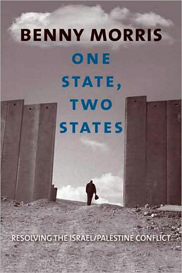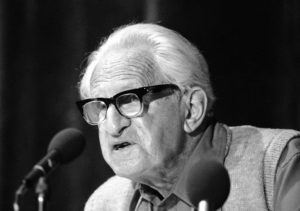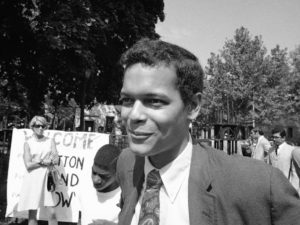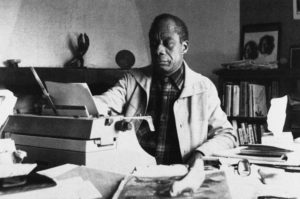Susie Linfield on How to Think About the Israeli-Palestinian Conflict
A provocative new book, “One State, Two States,” by revisionist Israeli historian Benny Morris breaks a taboo by asking whether anti-Zionism has become the anti-imperialism of fools. Can his polemic act as the ax that helps break up the frozen and brittle nature of a debate over the seemingly intractable war between Palestinians and Jews?
Whenever I hear people — including people I respect, and like, and might even love — talk about a “one-state solution,” my immediate reaction is: To what?
If you think — as do one-staters like Tony Judt and the late Edward Said — that the very existence of a national state for the Jewish people is problematic if not abhorrent, then the one-state solution, which as every schoolchild in both Israel and Palestine knows means the abolition of Israel as a Jewish homeland, holds undeniable appeal; and this is especially so since it cloaks the suggested extermination of an extant country, which would ordinarily be regarded as a fairly unsavory project, in attractive words like democracy, secularism, equality and justice. But if you believe that an end to the decades of horrific bloodshed in Israel-Palestine can’t possibly be accomplished by wiping out an established country — which would result in even more horrific bloodshed and make the “civil” wars in places like Lebanon, Yugoslavia and Iraq look like skirmishes — the one-state strategy is no strategy at all. Indeed, it recklessly inflames, and reproduces, the very conflict it claims, albeit disingenuously, to solve.
Enter the historian Benny Morris and his new book, “One State, Two States: Resolving the Israel/Palestine Conflict.” Morris is a key member of the revisionist Israeli historians who burst on the scene two decades ago (others in this contentious, far-from-unified group include Tom Segev, Avi Shlaim and Ilan Pappé). Morris has been called “immensely well informed,” “thoughtful and thought-provoking,” “the most influential and commercially successful of the Israeli ‘new historians,’ ” “the enfant terrible of his discipline” and the man who “revolutionized Israeli historiography.” He has also been accused of racism, of using “Zionist categories of knowledge” (whatever those are) and, by the leading Egyptian newspaper Al-Ahram, of being “a very sick person” and “a case history in the psychopathology of colonialism.”
Morris is an old-fashioned historian: He believes in truth, and he believes in documents. In fact, he tends to distrust interviews and oral histories as generally self-serving and inaccurate. (I would love to hear a debate between him and Claude Lanzmann, who has privileged oral testimony above all else and disparaged documentary research.) He is a scrupulous, tireless, indeed daunting archival researcher, and unlike more ideological historians such as Pappé, Morris believes that the historian’s job is to find out what happened and why, regardless of the political implications of his discoveries.
But in Israel, history has no chance — no chance at all — of escaping politics. In books such as “Righteous Victims” (1999), “1948 and After” (1994), “1948: A History of the First Arab-Israeli War” (2008) and, especially, “The Birth of the Palestinian Refugee Problem” (1989), Morris has revisited, and often exploded, some of the foundational myths of Zionism. In the book on refugees — his first and, to many Israelis, most incendiary — Morris found that, during the 1948 war, many of the Palestinians were in fact expelled, often brutally, from their villages; and he documented massacres and even rapes committed by Israeli soldiers. This was, needless to say, far from the stirring narrative that generations of Israeli schoolchildren had been taught. But Morris also challenged — though this was, perhaps, noticed less at the time — the myths of Palestinian nationalism. The expulsions were part of no grand plan (much less conspiracy) to create an ethnically pure state, but developed amid the fog, desperation and mutual cruelty of an existential war; nor was expulsion responsible for all of the flights. Equally important, Morris documented the implosion of Palestinian society: the hasty, ignoble abandonment of Palestine by its political leadership, professional class and bourgeoisie (Said’s family, as his sister’s memoir revealed, sat out the war at their home in Cairo); the fatal inability to forge any sort of national unity or create any national institutions; the lack of military prowess and, even, military willingness; and the incompetence and sheer opportunism of the surrounding Arab states — all of which despised the refugees, and none of which was fighting for an independent Palestinian state.
Though critics of Israel initially, indeed gleefully, regarded “The Birth of the Palestinian Refugee Problem, 1947-1949” as proof positive of Israel’s existential sins, Morris subsequently made clear that, in his view, it was anything but. He pointed out that it was the Palestinians, and the surrounding Arab states, who had rejected the U.N. partition plan — rejected, that is, the two-state solution — and who had launched the war. Once the fighting began, the choice for Israel, Morris has said, was to “either lose the war and be pushed into the sea, or ultimately push out the Arab minority in their midst who wanted to kill them.” Each side realized that this was an us-or-them war, a fact that has been swathed in mystification, at least in the West, for decades. (A piece on the Israeli-Palestinian conflict in a recent issue of The Nation, for instance, ends with an elderly Palestinian woman plaintively insisting, “All we want to do is have the three religions of people here live together in peace.” This particular woman may be expressing her genuine wish, but as a description of the larger conflict her statement is, to be blunt, utter hogwash, and anyone who is genuinely interested in solving the suffering and statelessness of the Palestinians would best ignore this kind of sentimentality.)
Morris’ political trajectory is important because it is shared by so many Israeli leftists, especially of his generation. He has what another Israeli historian has called “impeccable left-wing credentials,” both through inheritance and actions. Morris was in born, in 1948, on Kibbutz Ein Hahoresh (though Al-Ahram has described him as “a foreigner in the Middle East”) and, as a youth, belonged to the left-wing Hashomer Hatza’ir movement. He served as an artillery officer during the first invasion of Lebanon; but in 1988, during the first intifada — which he regarded as a legitimate protest — he refused deployment in the occupied West Bank, for which he spent three weeks in jail. For most of his life he voted for left-wing parties (Labor, Meretz); he was, in short, intimately connected with the peace camp and the tradition of socialist Zionism.But in Israel, very little of the peace camp (or of socialist Zionism) remains. Morris, like virtually all Israelis of whatever political tendency, was shocked by the viciousness of the second intifada, in which suicide bombers targeted Israeli civilians as they rode on buses, sat in cafes, attended Passover seders; and shocked, too, by the way in which these murderers were cheered on, with nary a dissenting voice, by their Palestinian compatriots and the larger Arab world. (Indeed, one of the most depressing themes to emerge from Morris’ research is the way in which Palestinian irredentists have always regarded the Israeli peace camp — not the Israeli right — as their enemy. The Oslo Accords were met by a furious spate of terrorist attacks from Hamas and Islamic Jihad, and the Likud’s surprise 1996 victory over Labor — preceded by an “unprecedentedly savage, concentrated Muslim fundamentalist terrorist offensive” — reportedly resulted in “celebrations in the headquarters of Iran’s Revolutionary Guards.”) The subsequent rejection by Yasser Arafat of the 2000 Camp David and, then, Clinton proposals — along, Morris says, with his more recent research into the consistent rejectionism of the pre-1948 Palestinian leadership — has led him to abandon even the most circumscribed hopes for a political resolution. In 2002, he published an article in the Guardian of London pithily, hopelessly titled “Peace? No Chance.”
Up to here, Morris’ political journey from optimism to despair is like that of many others. (I recently heard an equally pessimistic talk given by the Israeli philosopher Avishai Margalit, also a man of the left.) But Morris has also gone in directions that are very much his own, at least given the background from which he emerged. In a series of interviews, the most striking of which was given to the newspaper Haaretz in 2004, Morris criticized David Ben-Gurion for getting “cold feet during the [1948] war” and for the “non-completion” of the expulsions of Arabs; and he struck an ugly, wrathful tone (in sharp contrast to the dispassion of his scholarly work), likening Palestinians to serial killers for which “something like a cage has to be built.” These remarks stunned many Israelis and isolated Morris from his former comrades; The New York Times followed the Haaretz interview with a piece on Morris titled “An Israeli Who’s Got Everybody Outraged.” Last July, Morris wrote an Op-Ed piece for the Times in which he predicted — wrongly, thankfully, as it transpired — that “Israel will almost surely attack Iran’s nuclear sites in the next four to seven months.”
Morris has said that he still believes in the justice of a two-state solution — but not in the likelihood that it will come to pass. And indeed, between Israel’s Avigdor Lieberman and Benjamin Netanyahu (whom Morris had, years before, described as “Israel’s most incompetent — and mendacious — prime minister”), Hamas’ Khaled Meshal and Ismail Haniyah, Hezbollah’s Hassan Nasrallah, and Iran’s Mahmoud Ahmadinejad, he may well be right. (Aside from Lieberman, each opposes a two-state solution.) Is it possible to envision a more appalling, dangerous, utterly dismal group of “leaders”? All these guys scare me.
“One State, Two States” is most valuable in delineating the history of the binational idea — which (unlike uni-national one-stateism) has virtually no support among Israelis or Palestinians who actually live in the Mideast, though it has become the darling of certain leftist intellectuals who dwell in the relatively pacific and presumably more enlightened confines of London, New York and Paris. Morris writes that Tony Judt’s 2003 piece in The New York Review of Books called “Israel: The Alternative” “spawned a host of articles and books advocating the one-state solution” and, in a sense, allowed one-staters (including those who do not advocate binationalism) to come out of the closet. But Morris — as historian — has no patience with those who have constructed an era of congenial Arab-Jewish relations in pre-1948 Palestine, calling this prelapsarian idyll “a whopper of truly gargantuan dimensions. … In general, British Mandate Palestine … was characterized by two separate societies that did not interact or live ‘together,’ except in the sense of sharing the same air and complaining about the same, or different, British officials.” And why should it have been otherwise? The Jews, fleeing persecution, wanted to establish as many settlements as possible, which meant buying as much land from (often absentee) Arab landowners; the Arab peasants, naturally, resented the resulting dislocations. In addition, the two communities could not have been more different in the cultural and social realms. And the political one, too: In the 1920s, Palestinian nationalists complained to the British that the Zionist immigrants included too many of the “ ‘Bolshevik revolutionary type.’ ” (This complaint is, weirdly, echoed in the Hamas charter, which castigates Jews for, among many other things, having “stirred” the French and Russian revolutions.)
Binationalists like to point to Jewish intellectuals such as Martin Buber, Judah Magnes and — maybe — Hannah Arendt for support. But binationalist advocacy existed on the very fringe of the Zionist movement, and binational organizations such as Brit Shalom and Agudat Ihud had only handfuls of adherents. As the violence on each side increased, that fringe essentially disintegrated; the murder of 78 Jewish doctors and nurses in 1948, for instance, “was in effect the final nail in the coffin of Magnes’s binationalism,” Morris writes. For the Arab leadership in Palestine and the surrounding countries, binationalism wasn’t on the margins of political discourse but, rather, almost nonexistent; its few Jewish adherents “could find no Arab partners, or even interlocutors.” (This is still true today; as the Palestinian sociologist Salim Tamari wrote almost a decade ago, “Not one Palestinian political group, not even minority ones, have adopted binationalism as an objective. … All the major Islamic groups find it an anathema. … The idea raised by the PLO in the late 1960s and early 1970s of a secular democratic state of Jews, Christians, and Muslims was never put forward seriously except as a slogan.”) Morris writes that the few Palestinian intellectuals who dared mention binationalism have often been murdered as traitors by their less accommodationist brethren.
Binationalism was, in other words, a nonstarter from the first. But to have had any chance at all, as Palestinian intellectual Albert Hourani said in 1946, it would require “a certain spirit of cooperation and trust” and “an underlying sense of unity to neutralize communal differences. But that spirit does not exist in Palestine.” To say that such a spirit still does not exist in Palestine would be a radical, indeed unforgivable, understatement. Put most bluntly: Israelis and Palestinians have been slaughtering each other’s children for decades; for entirely good reasons, they regard each other with fear and loathing, and the idea of forcing them together into a “nation” is grotesque. Nor have the cultural, social and political chasms between the communities been bridged; on the contrary, anyone who thinks the secular, educated, mini-skirted women of Tel Aviv and the masked men of Gaza will somehow merge into a unified, peaceful entity is either extremely deluded or playing a very cruel game. What kind of legal system could such a “country” have? (Hamas — and not only Hamas — openly professes adherence to sharia law.) What would it teach its children in school? (And in what language?) What kind of electoral and political system would it create? What would be its relation to religion, to religious freedom, to religious institutions — and, for that matter, to secularism? What kind of press would exist, and with what kinds of laws — if any–regarding obscenity and blasphemy? What kind of social policies — what kind of rights — for women, children and gays would it enact? What kind of army would it forge? What foreign policy would it follow? How would this “state” — a mutant construct — remain internally intact for even a day; how would it conduct itself, externally, amid the family of nations? And since such a state would, inevitably and fairly quickly, become demographically dominated by Palestinian Arabs, why would anyone imagine that the rights, the freedoms and the cultural integrity of the Jewish minority in this “binational” society would be protected?
Merely raising these questions makes the point. But what, then, of the two-state solution?
The most interesting part of Morris’ book is his tracing of Zionism’s trajectory regarding the idea of two sovereign states living side by side in mutual acceptance. Two-statism was foreign to the original Zionists, and it took several decades — and the force of blunt, unyielding political realities — for Zionism to embrace it.
In the beginning, Zionism was unabashedly maximalist: “The movement’s aim, from the start, was the conversion of the whole country into a Jewish state,” Morris writes. “That is how both Zionism’s leaders and foot soldiers saw it.” But in the 1930s, two fatally simultaneous factors forced the Zionists to change. The first was the refusal of the Western democracies to admit Europe’s increasingly imperiled Jews into their countries; the second was the closing-down, by the British, of Jewish emigration to Palestine at the start of World War II — exactly the moment, of course, when so many Jews desperately needed to emigrate. As the need for an immediate haven became increasingly evident and increasingly urgent, the Zionists abandoned their founders’ maximalist dreams, and partition — as praxis — became acceptable. Thus, Morris writes, in the decade following the 1937 Peel Commission (the first two-state proposal), “the Zionist mainstream … internalized and came to accept the principle of partition. The mainstream abandoned the goal of a Jewish one-state solution encompassing all of Palestine. To be sure, in no small measure it was the Holocaust that persuaded the Zionist leaders to make do with what history had to offer, while it was still on offer. … History — meaning the British, the Americans, the Soviets, all under pressure by the Arab world and by the realities of Palestinian demography — would simply not award the Jews all of Palestine. So partition it had to be.” This had nothing to do, as Morris writes, with “altruism or a sense of fairness,” and everything to do with the reality principle.
The Six-Day War of 1967 was a watershed, for it “trigger[ed] powerful expansionist messianic urges in the Israeli public, especially on the right and among religious nationalists,” and undermined Israeli acceptance of partition; one disastrous result was the building of settlements in the occupied lands (something Morris has always opposed). The settlements are unjust and indefensible, both morally and militarily; they have become an albatross around Israel’s neck and caused immense suffering to the Palestinians; they are a major impediment to peace and to a two-state solution; they have, in a sense, blackmailed Israel’s political discourse. Still, there is no doubt that the great majority of Israelis oppose the idea of a “Greater Israel,” if only for practical reasons, and are willing to trade land for peace; the “expansionist weltanschauung proved short-lived,” Morris writes.
Alas, the Palestinians, and the larger Arab and Muslim world, failed to follow a parallel political development: and this, to me, is the gloomiest part of Morris’ book. “Throughout the Mandate years,” Morris writes, “the Palestinian Arabs viewed the conflict as a zero-sum game that allowed of no compromise and would necessarily end in the one side’s destruction or removal.” Much of this book traces the consistent, ferocious tenacity of this maximalism and its deep roots, as Morris sees it, in fundamentalist Islamic ideas about purity and holy war. But whether based in politics or religion or both — something that, I expect, will be heatedly debated — there is no doubt that the destruction of Israel, far more than the building of a Palestinian state, has been the holy grail — the non plus ultra — of Arab politics since 1947; the humiliating defeat of the Arab armies in 1967 added energetic, furious fuel to this fire. (Thus the defiant Arab League resolution of September 1967, which responded to the Israeli offer to return the Sinai and Golan Heights with the infamous, defiant “triple ‘no’ ”: no to recognition of Israel, to negotiations, and to peace.) Tortuous decades later, under pressure from the United States and other countries, the PLO renounced the project of exterminating Israel, though organizations like Hamas, Islamic Jihad and Hezbollah have not.
But Morris has grave doubts about even those Palestinian organizations that presumably accept a two-state solution. First, he notes that no such solution — starting with 1937’s Peel Commission and up through the Clinton-Barack proposals of 2000 — has ever been accepted as good enough by the Palestinian leadership. “For years, the Palestinians had been demanding a two-state solution; for years, Israel had stalled,” Morris argues. “Now, at last [in 2000], when Israel (and the United States) offered it, the Palestinians turned it down. … Arafat rejected the terms … not because of their detail but because of their underlying principle: two states for two peoples.” Second, even those Palestinian organizations that claim to adhere to a two-state solution also demand the return of the original Palestinian refugees, and their descendants, to Israel. And here we come to the crux of the problem (and to the subject of Morris’ first book). When the Palestinians demand the “right” to return, they are essentially demanding two states of Muslim Arabs: one in the West Bank and Gaza, the other in Israel. To my knowledge, the only Palestinian intellectual who has been honest enough and gutsy enough to say this, and to point out both its disingenuousness and its impossibility, is the president of Al-Quds University (and former PLO representative) Sari Nusseibeh — though he has, alas, scant following among his own people.The “right of return” is a phrase that has always baffled me. For if return is indeed a right for Palestinians, surely it must be upheld for others, too. And so, I wonder, what of the hundreds of thousands of Israeli Jews who left, or were expelled from, the Muslim countries of the Middle East and North Africa, where they had lived for centuries? Some of them, and their descendants, might want to go “home”: Isn’t that their right? Will Yemen, Syria, Iraq, Iran, Egypt, Lebanon, Algeria and Morocco welcome them back, usher them into their former homes, restore their businesses and professions? Think, if only for a minute, of the havoc that would ensue. With the “return” of so many “refugees,” both to Israel and the surrounding states, what would happen to the millions who would, of necessity, subsequently be displaced? Why would this not create new generations of refugees or at least masses of enraged, displaced people? How would this grand, mad population transfer take place? What relation does any of this have to justice, and why would it not result in social catastrophe and ruin on a massive scale?
Indeed, if each Palestinian has the right of return, so must every other displaced person on Earth. What, then, of the hundreds of thousands of Bosnians, Croats and Serbs who lost their homes (and much more) in the bitter Balkan wars of the 1990s? Should the Dayton Accords — which were, truth to tell, grievously unfair to the Bosnians, and which rewarded the murderous ethnic cleansing of the Serbs — be revoked, and each person of each nationality “restored” to her former home? Why would this one-state solution not be a prescription for another round of vicious wars, if not another round of genocide?
And if return equals justice, let’s take it further; post-World War II history is replete with states that came into being at the cost of immense violence and immense dislocation, and that have made some of their neighbors quite unhappy. Why not retract the division of the subcontinent — which resulted in massive expulsions, population transfers and an estimated million deaths — and impose a one-state “solution” on Pakistan and India? (And while we are at it, shouldn’t we force Bangladesh — which dismembered Pakistan when it unilaterally declared independence — to reunite with its former brethren? Over 8 million refugees resulted from that astonishingly short, pitiless war.) How far back should the clock be turned? Should the Sudeten Germans be returned to Czechoslovakia (a country that no longer exists)? Should the Treaty of Trianon, which robbed Hungary of two-thirds of its land and population, be revoked?
These examples are absurd, but only because they illustrate the essential bankruptcy of the concept of restoration, which obsessively revisits, and tries to re-create, a presumably edenic past rather than accept the far more difficult task of building a viable future. Indeed, the idea that justice lies not in creating history but in un-making it — which is the key idea behind the “right of return” — is the very definition of reaction, which is precisely why it is never advocated as a solution for anyone but the Palestinians, and why it is a sterling example of bad faith. In most circumstances, this attempt to vanquish history is commonly called revanchism, and is usually associated with ultranationalism and fascism. (See, for instance, the German right in the interwar years and, more recently, the Serbs during the breakup of Yugoslavia.) It usually leads to the most vicious, most unyielding politics, and it usually leads to war. It elides — in the case of the Palestinians as much as any other — the problem of forging a workable, good-enough, resilient solution for the future rather than seeking to eradicate the humiliations of the past through presumably glorious, and apparently unending, battles of redemption. It seeks ultimate justice: which may seem, at first glance, a beautiful thing but which usually turns out to be an ugly thing.
What are the prospects for a (real) two-state solution? “Very bleak,” Morris writes, “primarily because the Palestinian Arabs, in the deepest fibers of their being, oppose such an outcome.” In addition, Morris casts doubt on the viability of a Gaza-West Bank state, even on the off chance that it comes to be. Its minute size, Morris writes, would “leave the Arabs, all Arabs, with a deep sense of injustice, affront, and humiliation and a legitimate perception that a state consisting of the Gaza Strip and the West Bank (and perhaps large parts of East Jerusalem) … is simply not viable, politically or economically.” Ever the realist, Morris points out that such a small, fragile state would have tremendous problems meeting the needs of its own population, much less absorbing the millions of impoverished, often uneducated Palestinians who live in the grim refugee camps and refugee “suburbs” outside Palestine proper, at least some of whom would want to emigrate. In fact, an independent Gaza-West Bank might be the perfect recipe for a failed state. “And yet the two-state idea,” Morris writes, “remains the only sound moral and political basis for a solution offering a modicum of justice and, hence, a chance for peace, for both peoples.” How, then, to merge moral imperative with political, economic and social reality? Morris’ proposal — which lies outside the confines of acceptable (though increasingly sterile) debate — is, essentially, the reconstitution of Transjordan: that is, a West Bank-Jordanian Palestinian state. Jordan is a relatively large country whose population is, of course, already overwhelmingly Palestinian, and it is the only Arab country that has offered citizenship to the Palestinian refugees living within its borders. In Morris’ view, it is the only candidate that could realistically absorb the Palestinian populations of the West Bank, Gaza and the diaspora and build a sturdy, reasonably prosperous state with them. I cannot tell whether this proposal has even the slimmest chance of being seriously considered by the Palestinian leadership, the Israelis, the surrounding Arab states or the Jordanian monarchy. (Jordan’s Hashemite leadership probably has zero interest in sharing power with the Palestinians; it was the Jordanians who went to war against, and expelled, PLO guerrillas in 1970-71 and who slaughtered hundreds of Palestinian civilians in the process.) And such a state, even if established, would “face the opposition of the fundamentalists bent on Israel’s overthrow and conquest and the imposition of sharia over all of Palestine and, indeed, the Middle East,” Morris admits. But any opening up of the political possibilities in what has become a desperately intractable, ever-deteriorating situation is to be welcomed — though it probably won’t be.
In 1948, I.F. Stone, then the leading left-wing journalist in America, wrote a book called “This Is Israel,” illustrated with photos by, among others, Robert Capa. The book was a celebration of the founding of the new state and the reconstitution of the Jewish people in it, and an unalloyed attack on what Stone viewed as the imperialist, anti-Zionist policies of the U.S. and, especially, Britain. (One chapter was called “The Wicked Midwives: in which the State Department and the Foreign Office try to bring about a stillbirth.”) There was nothing unusual about Stone’s perspective: At the time, Zionism was viewed by many on the left as an expression of anti-fascism and national self-determination that had been betrayed, time and again, by imperialism.
It is impossible to imagine any leftist writing such a book today. And yet the left’s increasing antipathy to Israel — not just to its policies, but to the existence of a Jewish state itself — is, to me, both fatally misguided and puzzling. Take, for instant, the incessant criticisms of Israel, and the almost unanimous support for the one-state “solution,” in publications like Le Monde Diplomatique, The Nation, The New York Review of Books and the London Review of Books. These are the very same publications that (rightly) castigated President George W. Bush and the neocons for the arrogant assumption that they could impose a modern democracy — secular, multicultural, tolerant — on Iraq. Now, however, these journals confidently urge the creation — that is, the imposition — of a “binational Palestine,” despite the fact that neither Israelis nor Palestinians want to live in such a place; and they assure us, with equal confidence, that this entity would be modern, democratic, secular, multicultural and tolerant, despite overwhelming evidence to the contrary. The echoes here are very loud, and they lead me to wonder why the grand, deluded schemes of the left are any less imperialistic or hubristic — any less tragic — than those of our antagonists on the right.
The left’s embrace of Israel’s enemies, and its rejection of historical accuracy or even historical sense, is even more rebarbative. At demonstrations in London against the recent Israeli assault on Gaza, protesters’ signs equated Israelis and Nazis, Gaza and the Warsaw Ghetto, the Star of David and the swastika. (Note on semantics: The Jews of the Warsaw Ghetto were not “expelled” or “ethnically cleansed”; they were murdered. The Palestinians are victims of gross political repression, occupation and statelessness, not of “genocide” or a “holocaust”; in fact, their birthrate is among the highest in the world.) Even worse were the speeches and repulsive chants, including “Israel is the cancer, Jihad is the answer,” “We are all Hamas,” and “Hamas, Hamas, all Jews to the gas.” But “we” are not, in fact, all Hamas. It is a fanatically anti-modern, anti-secular group; it adheres to loony conspiracy theories about Jews and to the most backward fundamentalist ideas; its program is frankly expulsionist and eliminationist; and it teaches children that murder and suicide are the apex of human endeavor. Read its literature and listen to its leaders; they mean what they say, and they act on it.
Anti-Zionism has become the anti-imperialism of fools, and talk of a one-state solution is a party to this folly. I urge you, in the strongest terms, to read “One State, Two States,” though the book is far from perfect: Morris is, truth to tell, a better historian than polemicist, and he avoids engaging the irredentists on the Israeli side and the all-too-weak response of saner, more moderate Israelis to them. I do not think this book will “resolve” the Mideast crisis, as its subtitle promises. But I very much hope that it will ignite a freer, more honest, radically different conversation on the left, one informed by historical knowledge and current realities rather than the fantasies — alternately sentimental, infantile and grandiose — for which such a high price has been paid by all sides.
It is the brittle, paralyzed nature of the debate around Israel-Palestine that must be somehow broken, loosened, freed up. Reading Morris’ book reminded me of a passage in Argentine journalist Jacobo Timerman’s “The Longest War,” his cri de coeur against Israel’s 1982 invasion of Lebanon. (At the time, Timerman lived in Israel and considered himself Israeli.) He wrote:
As we enter the eighth week [of the war], what remains of all this? We, the Israelis, remain. They, the Palestinians, remain. After forty years, after several wars, after so many alliances and unutterable sufferings, so many political shifts, the protagonists remain the same, and we are still in the same place. We remain, Israelis as well as Palestinians, the same dying ones. The political boundaries have been altered several times, but basically both of us remain in the same place. We have denounced and insulted each other, we have murdered, persecuted, and beaten each other, but we remain the same, and we are stuck in the same place.
How do we answer this?
|
Susie Linfield writes about culture and politics for a variety of publications, and she directs the Cultural Reporting and Criticism program at New York University. |
As we navigate an uncertain 2025, with a new administration questioning press freedoms, the risks are clear: our ability to report freely is under threat.
Your tax-deductible donation enables us to dig deeper, delivering fearless investigative reporting and analysis that exposes the reality beneath the headlines — without compromise.
Now is the time to take action. Stand with our courageous journalists. Donate today to protect a free press, uphold democracy and uncover the stories that need to be told.







You need to be a supporter to comment.
There are currently no responses to this article.
Be the first to respond.